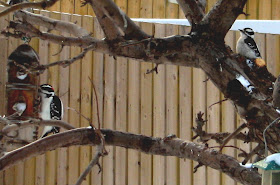UPDATE 03/12/10: I just received a link re more photos of this storm, plus an interview with the photographer, Sean R. Heavey. (Thanks, Barry)
--------------
Once again, I cannot resist, what with being an absolute weather geek and all.
This storm cell was photographed (not by me) near Glasgow, Montana this past summer. The summer before I was camping in my Class B RV in western North Dakota. A storm similar to this was being warned about on the Sidney, Montana radio station. Nowhere to run and nowhere to hide. Fortunately, that storm's path did not coincide with mine. (Click on photo to enlarge)
Credit & Copyright: Sean R. Heavey
Explanation: Is that a spaceship or a cloud? Although it may seem like an alien mothership, it's actually a impressive thunderstorm cloud called a supercell. Such colossal storm systems center on mesocyclones -- rotating updrafts that can span several kilometers and deliver torrential rain and high winds including tornadoes. Jagged sculptured clouds adorn the supercell's edge, while wind swept dust and rain dominate the center. A tree waits patiently in the foreground. The above supercell cloud was photographed in July west of Glasgow, Montana, , caused minor damage, and lasted several hours before moving on. From Astronomy Picture of the Day

















































